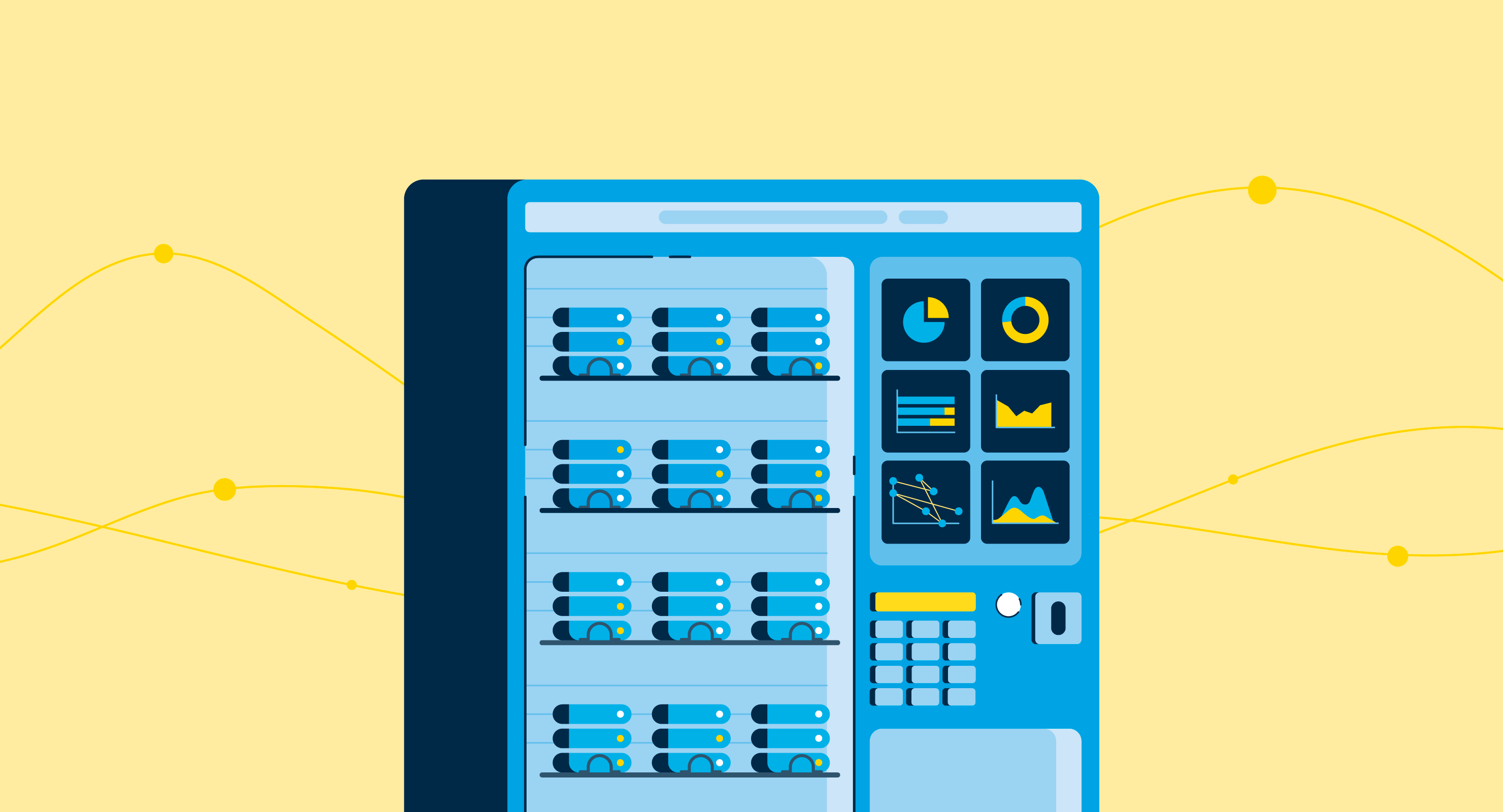Businesses manage a wide variety of data to run their operations effectively.
They collect and store different data types such as big data, structured or unstructured data, and more. As businesses grow, the size of their data store grows, and so do the silos within them.
In large organizations, data is often siloed across departments, making it tricky to get overall visibility while making crucial business decisions. Data federation eliminates this hassle and allows you to access all data from a single location. Many organizations implement data federation through data virtualization software to gain seamless access to their distributed heterogeneous data.
What is data federation?
Data federation is a software process that collects data from diverse sources and converts it into a common model. It allows multiple databases to function as one and provides a single data source to front-end applications.
Simply put, data federation allows users to access data from one place. You don’t need to go to separate databases and query based on their data type and model. You can easily access it from the data federation system.
Let’s understand it with a simple example. Consider the federation of states in the U.S. All states have a different set of rules and regulations. Still, the federation functions as one country governed by common federal laws. Similarly, organizations with multiple databases (ERP, CRM, and data lake) have different data models, and data federation brings them together under one roof, allowing users to view and access their data from one place.
Data federation addresses significant pain points of an organization when it comes to managing data effectively.
- Some common challenges that businesses face when managing data are as follows:
- Large storage requirements to collect massive amounts of data
- Time and resource requirements to organize inconsistent data
- Several cloud databases with multiple access restrictions
- Less clarity on how and where information is stored
Data federation technology helps companies address these challenges related to storing and retrieving raw data. It integrates all data virtually in a standard model and doesn’t require separate storage hardware, which saves money and time.
Some organizations use extract, transform, load (ETL) processes to create a copy of data stored in various databases and then store it in their data warehouse. It’s not a new practice. But if there is an error or delay in extracting data from one database, its impact will reflect in the ETL process and make it a time-consuming and resource-intensive method.
Data federation in organizations
Organizations have multiple databases to store and manage data. Most of this information is siloed across the organization based on the system or applications that use it.
180 Zettabytes
of data is forecasted to be created over the next five years up to 2025.
Source: Statista
Businesses managing massive amounts of data need to set up data integration techniques to view quickly and access information. Data federation is one such technique that brings all enterprise data together without separate storage hardware.
The control of individual databases rests with respective departments in the data federation, enabling them to maintain data quality and accuracy. This also allows them to get political buy-in from all stakeholders involved in its adoption and implementation process.
Data federation helps users get accurate reports that power up business decision-making processes. Organizations commonly use data federation and data warehousing strategies in their data management strategy, depending on the data volume and computational capability.
When both are used in conjunction, a seamless process for storing and accessing data is created. Data warehouse addresses the challenges or weaknesses of data federation, and both together provide an ideal solution to common business data management problems.
Data virtualization vs. data federation vs. data consolidation
Data federation can be viewed as part of the data virtualization framework. Data federation and virtualization matured simultaneously, but the latter grew in value with extra features, applications, and functionalities.
Although data federation is a component of the data virtualization framework, they’re not necessarily similar.
.png)
Data virtualization is an approach to data management that creates a logical extraction layer. It allows users to access and modify diverse data sets without worrying about technical details, like how the data is formatted at the source system or where it’s stored.
Data virtualization doesn’t replicate or convert distributed data into a common model. It helps a user connect to required data and delivers it in real-time. Data virtualization also allows businesses to apply a range of analytics like predictive, visual, and streaming to the most recent data updates.
On the other hand, data federation converts different data into a common model and provides a single data source for front-end applications to access distributed data.
Data virtualization and data federation are ways to integrate data, making it simpler for front-end applications to access.
Data consolidation, on the other hand, means bringing all data stored in multiple systems into a single repository that businesses can access to make strategic and operational decisions. This approach is majorly used in data warehousing and data lakes.
Data consolidation heavily relies on the ETL process. Data is extracted from multiple systems, transformed to fit the common data model, and then loaded into a data warehouse. This approach enables high-speed analysis as it includes data pre-processing. Still, you don’t get real-time insights from the data warehouse as it uses old information.
Unlike data consolidation, data federation doesn’t bring all data under one repository, but it integrates data virtually and provides a unified view with virtualization.
Quer aprender mais sobre Software de Virtualização de Dados? Explore os produtos de Virtualização de Dados.
Challenges of data federation
Data federation stages some challenges for users. These software are costly to implement depending on the complexity of architecture.
There are various other challenges of data federation, including:
- Improper cleansing of complex data: Although data federation solutions fine-tune and cleanse data, the challenge arises while dealing with too inconsistent or problematic data. Your data should be in relational or XML format to implement data federation; otherwise, it’d be challenging to integrate complicated databases.
- Lack of historical data: Data federation reports the most recent data and doesn’t retain historical data in any form, making it challenging to trace, detect, and resolve errors. You’d need a physical data storage system to store historical data.
- Requirement of computing power: If your systems are running at their maximum capacity, you’d need to upgrade your systems to run data federation and ensure that it doesn’t hamper vital data processing tasks.
Apart from these, you need to ensure that you have substantial governance around data ownership. It’s better to check whether you have the support of all stakeholders before starting the implementation process, as it’d require collaboration and coordination across teams.
Benefits of data federation
With the growing focus of organizations on creating an easy-to-use data accessibility solution and eliminating data silos, data federation has gained popularity in the past decade.
Data federation offers multiple advantages for organizations, including:
- No additional storage requirement: Data federation software doesn’t copy data from individual databases to any repository. Since data integration carries out virtually, you don’t need to allocate separate storage space or hardware.
- Faster access to data: Data federation offers a single source to access any data. It eliminates the hassle of making queries in individual databases to get what you need by providing a single platform, enabling you to access data seamlessly and save time.
- Ease of use: Data federation tools don’t require you to possess knowledge of different coding languages. You need minimal coding knowledge to make queries and access the data.
- Cheaper option with minimum risk: Since data federation doesn’t create a separate copy of data, it prevents you from spending on costly storage hardware. At the same time, it minimizes the risk of data loss as there is no physical data movement.
- Makes data scientist’s role easier: Data federation takes care of cleansing data, making it easier for data scientists to use accurate and consistent data and collect insights from it.
- Use accurate data to support business decisions: Data federation allows businesses to gain insights from reports on the most recent data. It enables business users to access real-time data without requiring ample coding knowledge and use it for business intelligence as well as making strategic and operational decisions for their organization.
Data federation: frequently asked questions (FAQs)
What are federated databases?
Federated databases are systems where multiple databases function as a single entity, allowing users to access heterogeneous data in a unified way.
What is the difference between data integration and data federation?
Data integration provides meaningful relationships between data stored in multiple places by replicating all data from different sources and providing a single platform to access it. On the contrary, data federation doesn’t replicate data, but it virtually creates a single data model and allows you to access data stored across disparate systems from a single platform.
What are examples of data federation?
An enterprise information integration (EII) is an example of data federation technology. It provides a universal data access layer that allows users to view dispersed data sources.
What is a federated data source?
A federated data source integrates multiple sources while offering access with a federated query.
What are federated models?
Federated models are standardized data models that source data from different DBMS platforms and maintain a centralized virtual location of data. This provides the front end with a fresh supply of data, and if something is wrong during data transfer, only one part of the model is scrutinized and fixed without harming data in other locations. It is part of a data virtualization framework.
Data is not high maintenance but self-maintained.
With a data federation system working alongside a data warehouse and other integration solutions, you can provide seamless data access in your organization. The drawback of data federation is offset by the advantages of data warehouses, which make an ideal solution to database problems.
Learn more about data lineage now to visualize the complete data flow in your organization and optimize it to maintain the accuracy and integrity of data.

Sagar Joshi
Sagar Joshi is a former content marketing specialist at G2 in India. He is an engineer with a keen interest in data analytics and cybersecurity. He writes about topics related to them. You can find him reading books, learning a new language, or playing pool in his free time.

